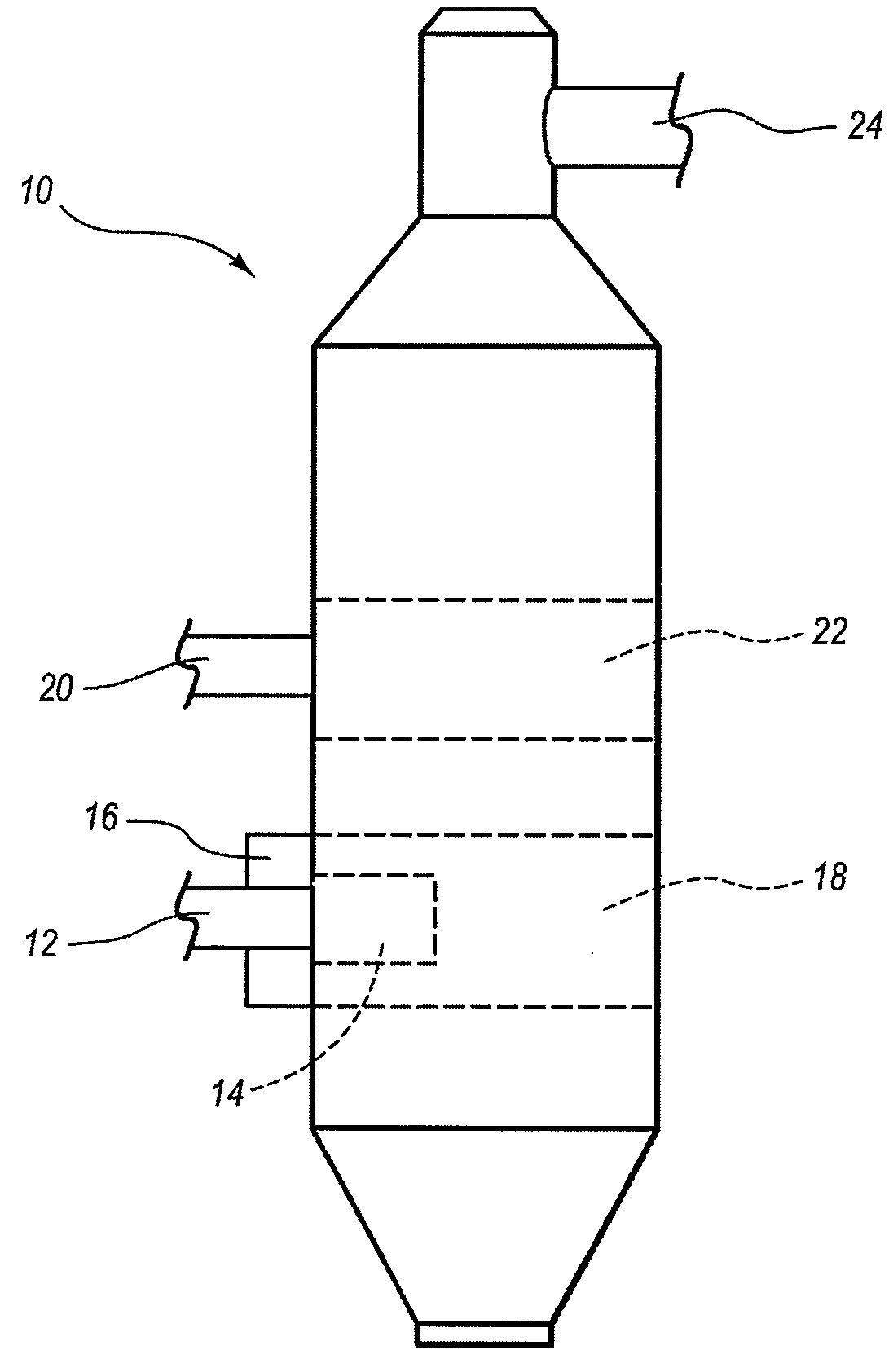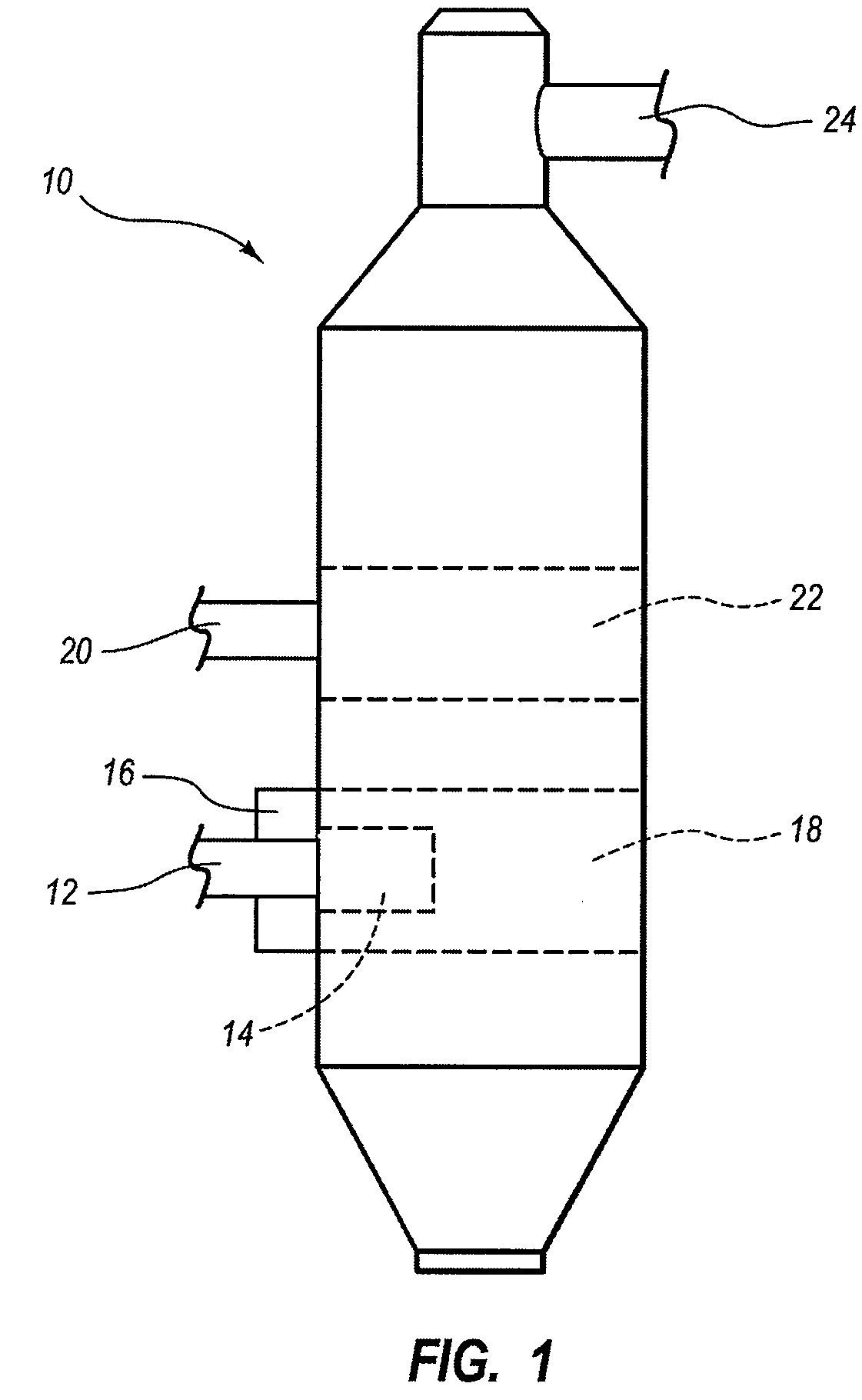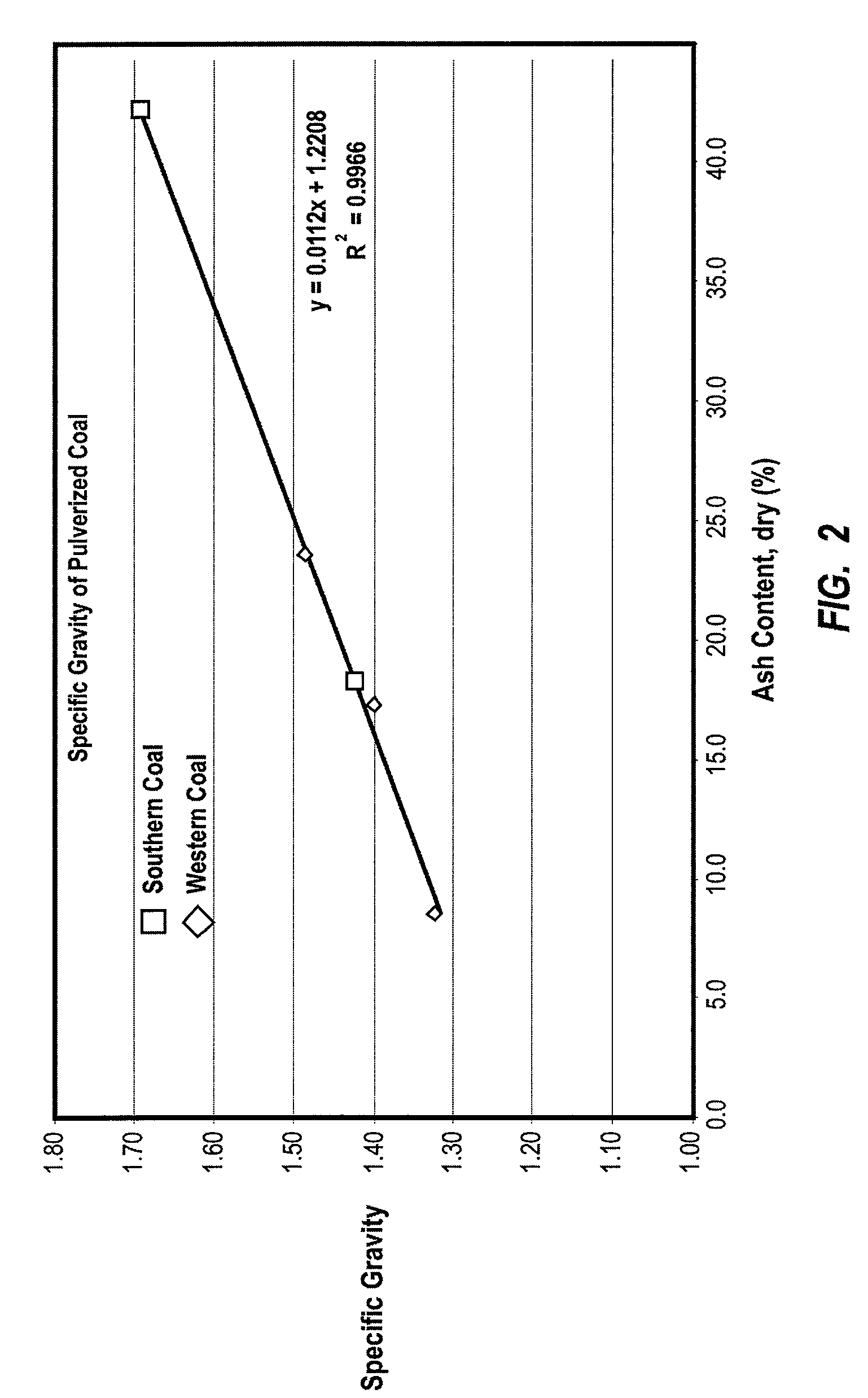METHOD FOR REDUCING NOx DURING COMBUSTION OF COAL IN A BURNER BY OPTIMIZING COMBUSTION AIR FLOW
a combustion air flow and combustion method technology, applied in the direction of solid fuel combustion, combustion types, lighting and heating apparatuses, etc., can solve the problems of less efficient combustion, inability to reduce nox emissions, and settle out of heavier particulate fractions, so as to reduce the air/fuel ratio, reduce the output, and reduce the ash content
- Summary
- Abstract
- Description
- Claims
- Application Information
AI Technical Summary
Benefits of technology
Problems solved by technology
Method used
Image
Examples
example 1
[0094]A NOx emissions test of Wellington coal feedstocks and refined coal fuel products was performed. The combustion test was part of an ongoing program to evaluate the combustion performance and NOx emissions of refined coal products relative to their initial coal feedstocks. During these combustion tests, four samples from the Wellington coal refining facility (Utah) were evaluated. The primary Wellington coal feedstock contained 15.9% ash by dry basis weight and the primary refined product contained 8.5% ash by dry basis weight. The secondary Wellington coal feedstock contained 48.2% ash by dry basis. weight and the secondary refined product contained 14.9% ash by dry basis weight. The purpose of these combustion tests was to study the relationship between ash content and NOx emissions.
[0095]The operating conditions for this test series were designed to simulate, to the greatest extent possible, actual boiler conditions for a majority of the pulverized coal-fired boilers in the ...
example 2
[0103]A similar test as in Example 1 was performed using Alabama CEF #3 fine coal and refined products. The following conclusions were made from these tests:[0104](1) refining the CEF #3 feedstock from about 40% ash (dry basis) to about 20% ash (dry basis) and using no overfire air resulted in a NOx emissions reduction of about 50%;[0105](2) refining the CEF #3 feedstock from about 40% ash (dry basis) to about 20% ash (dry basis) and using 15% overfire air resulted in a NOx emissions reduction of about 50%.
[0106]The coal samples were analyzed in the same manner as the samples in Example 1. The results of this analysis are shown in Table 2 below, and are reported on as received and dry bases.
TABLE 2FeedstockProductPARAMETER20072007As Received BasisProximate (wt. %)Moisture1.721.63Volatile Matter15.4717.87Ash40.5418.17Fixed Carbon42.2762.33Ultimate (wt. %)Carbon49.9372.91Hydrogen3.374.32Nitrogen0.801.23Sulfur0.380.51Oxygen3.261.23Ash40.5418.17Heating Value (Btu / lb)844112591Mercury (pp...
example 3
[0107]NOx emissions tests were performed using an eastern bituminous secondary coal material from eastern Kentucky (Century Material). The results of these tests are graphically depicted in FIG. 7. The NOx emissions reductions were on average about 50%.
PUM
 Login to View More
Login to View More Abstract
Description
Claims
Application Information
 Login to View More
Login to View More - R&D
- Intellectual Property
- Life Sciences
- Materials
- Tech Scout
- Unparalleled Data Quality
- Higher Quality Content
- 60% Fewer Hallucinations
Browse by: Latest US Patents, China's latest patents, Technical Efficacy Thesaurus, Application Domain, Technology Topic, Popular Technical Reports.
© 2025 PatSnap. All rights reserved.Legal|Privacy policy|Modern Slavery Act Transparency Statement|Sitemap|About US| Contact US: help@patsnap.com



